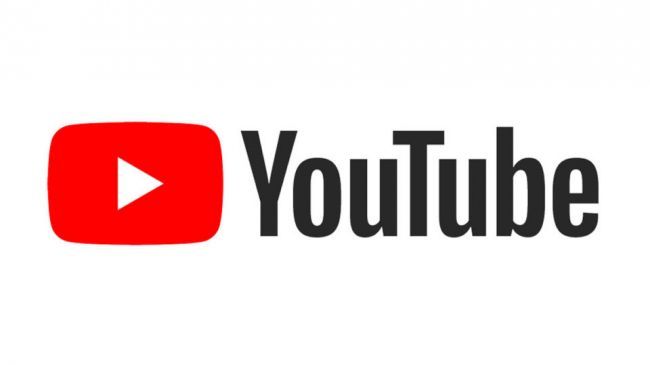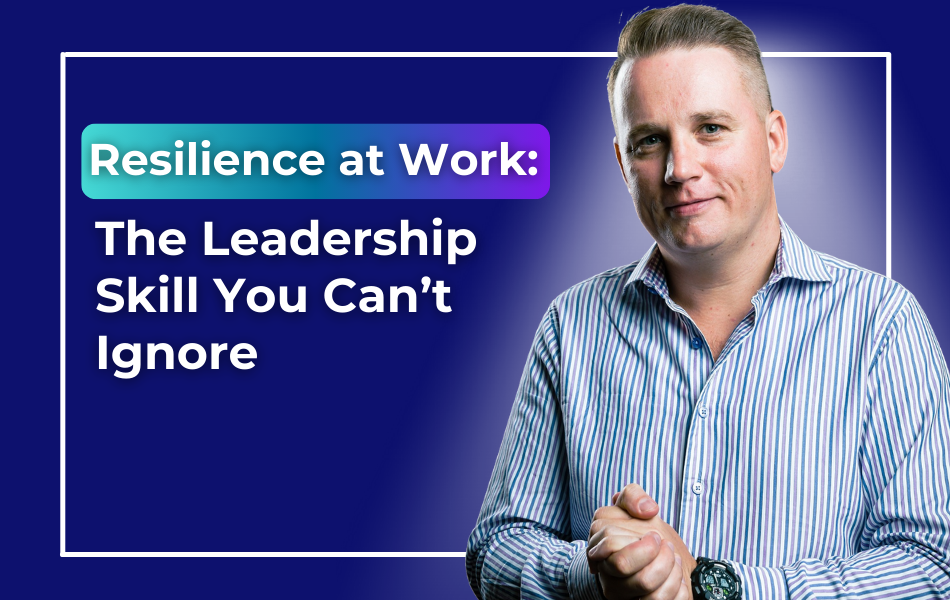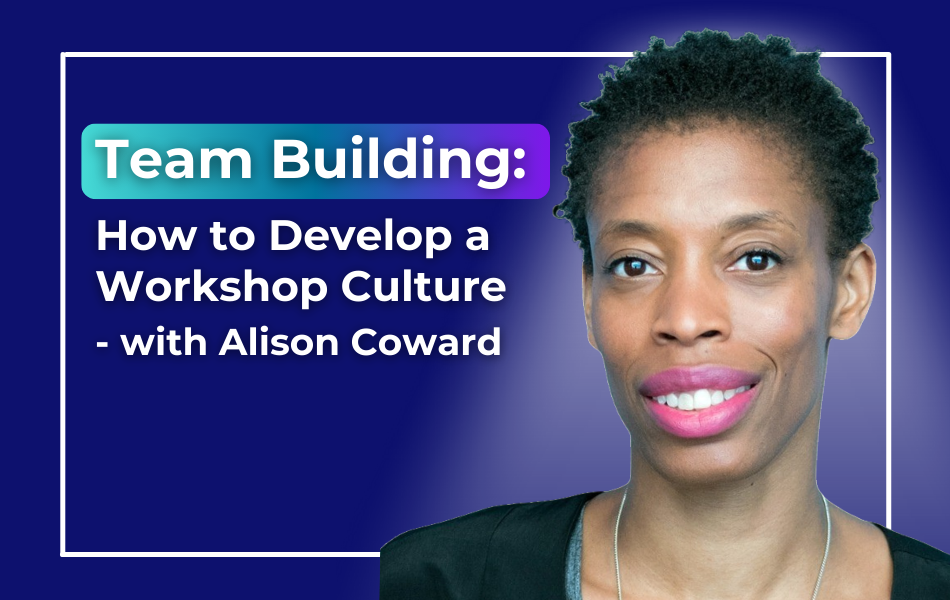
214. 3 Feedback Models Every Leader Should Master
About this Podcast
Ep. 214 – Feedback is a cornerstone of effective leadership.
Your ability to provide constructive criticism and recognition is crucial for team improvement, engagement, and achieving organizational goals. New leaders, in particular, often face the challenge of giving employees direct and candid feedback when they’re still trying to establish trust and respect from the team. And this comes at a cost to both the leader and the team.
In this episode of The Manager Track podcast, Ramona explores the importance of feedback and recognition in leadership. She details three different models of giving feedback: curiosity-based conversations, the gap model, and the ISID feedback model to help leaders improve performance and engagement within their teams.
If you’re looking to enhance your feedback skills or aiming to refine your approach, this episode is packed with insights and tools to help you succeed.
Watch it on YouTube here.
Episode 214 Transcript:
0:00:00 – (Ramona Shaw): This episode of The Manager Track podcast is all about feedback and recognition. And specifically I want to call out three different ways and different modes or models of giving feedback. Here’s the question.
0:00:13 – (Ramona Shaw): How do you successfully transition into your first official leadership role, build the confidence and competence to lead your team successfully and establish yourself as a respected and trusted leader across the organization? Thats the question and this show provides the answers. Welcome to The Manager Track podcast. Im your host Ramona Shah and Im on a mission to create workplaces where work is not seen as a source of stress and dread, but as a source of contribution, connection and fulfillment.
0:00:41 – (Ramona Shaw): And this transition starts with developing a new generation of leaders who know how to lead so everyone wins and grows. In this show youll learn how to think, communicate and act. Ask the confident and competent leader.
0:00:54 – (Ramona Shaw): You know you can be welcome to The Manager Track podcast and I’m happy that you’re listening to this because I know this might be free time, although you might be commuting or doing something else. I don’t know if you’re working out or you’re cleaning. That’s usually when I listen to my podcast. But you chose to listen to podcasts about feedback, which says a lot about you and your commitment to being a great leader. So I appreciate you for tuning in and I’m going to make sure that every minute of this podcast is going to be worthwhile for you and that you walk away actually understanding different models more than you do right now before listening to this podcast.
0:01:34 – (Ramona Shaw): So why are we talking about feedback? Why is it such a common leadership development topic? Why is it so important for leaders to get good at giving feedback? Because one, feedback is the number one tool for improvement. And two, when we actually look at statistics and I’m going to call out here the one that I think makes that point the strongest. But across the board, when we look at statistics about feedback and what type of feedback people want, what they’re actually getting, and what they do with feedback, the picture is pretty clear.
0:02:11 – (Ramona Shaw): Feedback is not only always good. So the statistic I want to mention here is by Kluger and Denisi, which says that only a third of feedback given actually leads to increased performance. About a third falls flat, and a third actually decreases performance due to disengagement, lack of commitment to work and checking out or being demotivated. Think about that. We on one hand know that feedback is the number one tool for improvement, yet it doesn’t happen nearly enough and not nearly as much as people want it to happen.
0:02:51 – (Ramona Shaw): But then when we do give feedback, and we don’t know how to give effective feedback. It actually only lands a third of the time, and there’s a high chance I’m actually doing more damage than I do any good. So with that said, if you don’t like giving feedback, you’ve never really learned how to give feedback and practice that sort of in a safe space. We also don’t have an understanding of different models of feedback.
0:03:15 – (Ramona Shaw): This episode is for you. But here is the thing. I cannot give you and teach you all things about feedback and equip you with all the tools and insights that you need, including best practices, do’s and don’ts, and walk you through specific scenarios in a podcast episode that in our case only lasts about 20 to 30 minutes. This is what we do deep dives on in our leadership development programs, including the leadership accelerator for new miniatures.
0:03:43 – (Ramona Shaw): So if you’re unsure how to do this, either check out our programs or we also offer workshops for teams and organizations on feedback. So check the show notes of this episode to find the link on where to learn more about our workshops and programs. Okay, enough of that. We’re going to make this episode really concrete. While I cannot go into all of it, I’m going to give you some really good and important nuggets because we’re going to talk about three different models of feedback.
0:04:13 – (Ramona Shaw): The models of feedback that I’m going to talk about will be about sort of what we would call constructive feedback or things that we want to point out that aren’t really going the way that we would like them to go or someone’s doing things that we’d expect them to do differently. At the same time, though, I cannot emphasize enough how important it is for you to have a practice of recognition. This is probably the most underused leadership tool ever that I can think of.
0:04:45 – (Ramona Shaw): Recognizing your employees for demonstrating the values of the company or the team, going the extra mile, helping someone else, putting in great effort, creating great results, being really creative, something that deserves recognition, something that you want to see again and again. If you see a behavior and you like it and you want them to do this again, worth a shout out. Now, when we recognize employees, there’s not just the direct recognition between me and them. And oftentimes people say like, oh, I’ll send them a slack message and said, great job. Or I responded to an email or give him a thumbs up.
0:05:26 – (Ramona Shaw): That is nice, but that scratches the surface. Really, what you want to do when it comes to recognition, and we talk about this again in our leadership programs, is to build a system around cultivating an environment and a culture of frequent recognition. And it doesn’t happen by coincidence. It doesn’t naturally happen because our brains are not wired to see the good things. Our brains are wired to pay attention to the things that cause stress, things that are negative, the things that are risky, and the things that we perceive as some kind of a threat and things that go well and someone does really good job in. It’s not something that our brains will pick up and as a threat.
0:06:10 – (Ramona Shaw): So if you don’t intentionally create a system around recognition, it’s likely that you’re not using this particular of leadership tool to its fullest potential. When you think about recognition, three specific levels to consider. One, the recognition from you as a manager to your team, your direct report. That’s one. Number two is stakeholder recognition, which may include recognition from your boss or another senior leader in the organization.
0:06:39 – (Ramona Shaw): It could be recognition from a client or from an other external stakeholder that you want to cultivate and create channels back to your employees so that they get this kind of feedback from positive feedback from other people. And then there’s peer recognition, the recognition from their social peers in the organization. All three of those are important. It’s not just you to them, which is what we typically think of.
0:07:06 – (Ramona Shaw): It’s beyond that. Okay, that in itself could be a session, a workshop, an hour of a conversation, if not more. But I’m going to cap that, put that in a bucket and say, recognition, very important as we talk about feedback. But now let’s talk about sort of the more uncomfortable feedback, which is when we are dealing with situations, again, that someone does something, says something, doesn’t do what we want them to do.
0:07:33 – (Ramona Shaw): And in these situations, we have different ways to approach it. And if you imagine you’re a mechanic or I was at the car shop this morning, hence that analogy. Or if you think about dentists, they have all these tools, you know, in front of you, and then as they are going through your mouth and checking out your teeth, they may use, oh, gosh, it gives me goosebumps just even talking about it. I do not like the dentist, but they grab different tools, different equipment based on what they see.
0:08:04 – (Ramona Shaw): It’s not just one thing. They don’t just have this little scraper things. They have a range of different tools for a range of different situations. When you think about feedback, again, mechanic or dentist, or use any other example, that’s how you want to look at it. Different tools for a range of different situations, I want to call out the three most common models of feedback. The first one is the light touch. So this is when you notice someone does something that kind of surprised you or wasn’t what you expected.
0:08:39 – (Ramona Shaw): This is curiosity based model. I’m even having a hard time saying curiosity based feedback because we’re not even really trying to give feedback. We’re trying to call out that something unexpected happened, and we want to know why. So someone comes late to the meeting, and then after the meeting, you could either say, hey, I need you to be on time, or, please don’t come late again. That would be direct feedback.
0:09:08 – (Ramona Shaw): Or you could use the curiosity based model, which is to say, hey, I noticed you were late to the meeting. What happened?
0:09:18 – What got in the way?
0:09:19 – (Ramona Shaw): Were you being on time? Now, we don’t say that with an undertone of, like, what happened. That’s not the point. That would be a judgment wrapped up in a question. We actually want to genuinely feel curiosity and ask from that place, as I think you’d want to be on time. I assume you wanted to be on time, or I assume you wanted to do a good job, or I assumed you wanted to do well. And so I wanted to understand what happened, or what was your approach, or what was your process when you came up with XYZ.
0:09:53 – (Ramona Shaw): So, really asking a curiosity based question to better understand where they’re coming from. What you do that way with this sort of feedback model is you’re highlighting that something happened that was unexpected to you. You had expected a different behavior or a different outcome, and that didn’t happen. And so you want to understand what happened, giving them the full benefit of the doubt that there was a reason for that, or that there’s information that you don’t have to completely assess that situation, which is, by the way, the vast majority of cases that’s true, we don’t have the full picture, but our mind is, you know, there’s gaps in the story, but we’re very quick to fill those gaps, and then we formulate a judgment, and we share that.
0:10:40 – (Ramona Shaw): So refraining from doing it and really leaning into curiosity. So that’s the first curiosity based model. The second feedback model I want to call out here is what I refer to as the gap model. The gap feedback model is based on the assumption that the other person is self reflective and the other person wants to do a good job. And so instead of me saying, hey, I want to give you some feedback on the client presentation today, I noticed that the client got lost about ten minutes into the conversation or into the meeting because you didn’t share an agenda ahead of time, and then we kind of derailed throughout the conversation and ended up losing a lot of time on this one topic that wasn’t actually where we wanted to head to.
0:11:23 – (Ramona Shaw): I wanted to share that feedback with you to emphasize the importance of sharing an agenda upfront. That would be feedback like you’re actually telling them what you didn’t like and what you want them to do. It’s not what the gap model is. The gap model is to say, hey, can we debrief together? The client presentation today? How do you think it went? What do you think went well? Let them talk. What do you think didn’t go so well and you would do differently next time.
0:11:52 – (Ramona Shaw): You’re assuming that they wanted to do a good job again, and you’re assuming that they are self aware and can reflect. That they are able to self reflect. And then your feedback, your additional comments only address the gap. The things that they didn’t mention, including the strength, the things that they thought went well, but you might have additional things that you thought went well, but they didn’t call that out.
0:12:18 – (Ramona Shaw): Add that to it, then the things that they said didn’t go well.
0:12:23 – Great.
0:12:23 – (Ramona Shaw): You can validate that or you can comment on it. And then you add whatever else you think is important for them to know or things that you saw that didn’t go well but they didn’t already mention. So that’s the gap model you’re really telling them. First, to self reflect before you add any feedback.
0:12:40 – As a caring and driven manager, I know you want to strengthen your leadership skills, advance your career, and lead a high performing, engaged team. And in order to do that, as a leader, you need to lead with a system, not by shooting from your hips or reacting to everyone else around you. To do so, you need to first learn what should go into a leadership system, and second, develop your own. Now, the good news is that I teach you one must have part in your leadership system in a concise, actionable, and yet comprehensive course focused on running.
0:13:16 – (Ramona Shaw): Successful one on one meetings with your direct reports.
0:13:19 – It includes over 67 minutes of tactical leadership training, plus a set of resources to make this as easy and immediately applicable for you as possible. You can either watch the video lessons or listen to it through a private podcast feed on your phone. You can get your hands on this course, which I want every single manager to have for a nominal $19 at ramonasha.com one. One that’s two times the number one.
0:13:48 – (Ramona Shaw): You can check the show notes for.
0:13:49 – The details or head on over to ramonashaw.com dot to get started right now.
0:13:58 – (Ramona Shaw): Number three and the last model I want to share is the typical feedback conversation. And in our training programs we refer to this as the ISID model. The first I stands for intention. You might want to say something like, hey, I want to share this feedback with you so you have all the information you need in order to grow and be the best you can in this type of situation or role. Or hey, I see a lot of potential in you and I think there are just a few things that you need to learn and develop more to get you to this next level. And so I want to share some feedback with you.
0:14:34 – (Ramona Shaw): Ways to share your intention upfront. Then the s stands for situation. And here is what you want to describe what happened as factually as possible. So the situation at hand, what was the scenario like? And then what was the behavior that you want to address? That’s the s. And then the next I. So I s I stands for impact. What’s the impact of this? Why was this not a good thing? Or how does this impact the client, the team, colleagues, you, their reputation?
0:15:07 – (Ramona Shaw): Talk about why this wasn’t a good thing or wasn’t effective. And then D, the end of the Isid. The d stands for discussion. And this is the most important aspect of this model. We like to say about 50% of the feedback conversation should be allocated to this last d where you talk about how, when asked how did they perceive the situation? What was going on for them, what are the lessons they’re learning? What are the things they want to do to better prepare or do things differently in the future?
0:15:38 – (Ramona Shaw): That is a discussion. It’s not you giving it, it’s a two way street. And actually, the more that they own the sort of the self reflection and the action plan, the better, because that’s leading to a higher commitment to execution. So the three models of feedback I want to highlight today in this short episode is one, curiosity based conversations. When you notice something and you want to ask about it, genuinely curious, drop the judgment.
0:16:09 – (Ramona Shaw): Number two, the gap feedback model, which is great in moments where someone else has the ability to self reflect, and then you’re adding, closing the gap. And then three, the typical feedback model. And this is usually for situations where it’s been addressed multiple times, it’s a little bit more severe and concrete of a mistake that happened or something that didn’t go well. Now, when you give feedback but nothing happens, and this behavior gets repeated the second time, address it again, and then the third time no longer address the issue or the situation. Now you start to address the pattern. So you talk about, I’m sensing the pattern that you frequently come late to the meeting. It’s no longer you were late to this morning’s meeting or your report was incomplete or was late.
0:16:55 – (Ramona Shaw): There is a pattern. If you’re not meeting deadlines, it’s no longer about just this one incident. Right. So then you’re extending it into the pattern. And if that still doesn’t work, you have to get more concrete with the consequences. What are the consequences of this person not changing their behaviors? That needs to be crystal clear. And I know that sometimes can be hard. But if you’re asking them to change a behavior and they haven’t, it’s because they don’t see the need for it.
0:17:24 – (Ramona Shaw): They may disagree with it, or they don’t think it’s important enough for them to change. And granted, behavioral change is hard. I’m not saying this should be an easy overnight, snap of a finger kind of thing. We want to give people grace, but we at least want to see that they’re putting in the effort to make the change, and they see that this is important. But if they don’t, it’s because the consequences aren’t strong enough.
0:17:50 – (Ramona Shaw): So think about consequences that you’d want to share with them if they’re not changing that specific behavior. And that, again, will depend on the situation. It will depend on what kind of consequences you can give and how severe this issue is. So again, the curiosity based feedback model, the gap model, and the ISID feedback model that we talked about here at the end, these are three tools that allow you to give feedback or have feedback conversations, but in different ways. And you can use them for different scenarios at hand.
0:18:20 – (Ramona Shaw): As I said in the beginning, there’s a lot more to giving feedback effectively, to make sure your feedback lands and increases performance on your team or with your team members. And doesn’t it land flat or actually create a more disengaged team member? And I can’t emphasize this enough, but if you haven’t really leaned into developing this skill of giving feedback and doing so effectively, and also recognizing people effectively in a very personalized and specific way, and frequently, as we talked about, then that would be a missed opportunity and something that I highly recommend to develop. It has a huge payoff for you for the rest of your career to do so.
0:19:05 – (Ramona Shaw): You can check out our programs where we dive deeper into these topics in the show notes or head on over to archova.org or if you are in a team, or if you are a team or in an organization looking for workshops on feedback, head on over to arkova.org workshops. Thanks again for showing up and listening to a podcast episode on feedback. An important topic, but not the most exciting topic. I totally get that and I appreciate you for being here and recognizing how critical and important it is to be able, as a leader, to be able to give feedback effectively.
0:19:41 – (Ramona Shaw): That’s it for now. I wish you a great week. I will see you again or talk to you again next week with another episode of The Manager Track podcast. Ciao for now.
0:19:50 – (Ramona Shaw): If you enjoyed this episode, then check out two other awesome resources to help you become a leader people love to work with. This includes my best selling book, the Confident & Competent new manager, which you can find on Amazon ormonashaw.com book and a free training on how to successfully lead as a new manager. You can check it out@ramonashaw.com masterclass these resources and a couple more you’ll find.
0:20:17 – (Ramona Shaw): In the show notes down below.
REFLECTION & DISCUSSION QUESTIONS
- What are the key differences between constructive criticism and recognition, and how can each be used effectively in your team?
- How do you ensure that your feedback is specific, actionable, and focused on behaviors rather than personal attributes?
- What steps can you take to improve your feedback skills and ensure that you are fostering an environment where feedback is viewed as a positive tool for growth and development?
RESOURCES MENTIONED
- Learn more about the Leadership Accelerator here: https://archova.org/leadership-accelerator/
- See all our workshops here: https://archova.org/workshops/
- Learn how to turn your 1-on-1 meetings from time wasters, awkward moments, status updates, or non-existent into your most important and valuable meeting with your directs all week. Access the course and resources here: ramonashaw.com/11
- Have a question or topic you’d like Ramona to address on a future episode? Fill out this form to submit it for her review: https://ramonashaw.com/ama
OTHER EPISODES YOU MIGHT LIKE
- Episode 19: How to Ask for Feedback
- Episode 126: Giving Feedback: 3 Common Mistakes
- Episode 131: Creating a Feedback Culture – With Harrison Kim
- Episode 171: Dual Models Leaders Have to Navigate
WHAT’S NEXT?
Learn more about our leadership development programs, coaching, and workshops at archova.org.
Grab your copy of Ramona’s best-selling book ‘The Confident & Competent New Manager: How to Rapidly Rise to Success in Your First Leadership Role’: amzn.to/3TuOdcP
If this episode inspired you in some way, take a screenshot of you listening on your device and post it to your Instagram Stories, and tag me @ramona.shaw.leadership or DM me on LinkedIn at linkedin.com/in/ramona-shaw
Are you in your first manager role and don’t want to mess it up? Watch our FREE Masterclass and discover the 4 shifts to become a leader people love to work for: www.archova.org/masterclass
Don’t forget to invest time each week to increase your self-awareness, celebrate your wins, and learn from your mistakes. Your career grows only to the extent that you grow. Grab your Career Journal with leadership exercises and weekly reflections here: ramonashaw.com/shop
Love the podcast and haven’t left a review yet? All you have to do is go to ramonashaw.com/itunes and give your honest review. Thanks for your support of this show!
* Disclaimer: Shownotes may contain affiliate links. That means that I am awarded a small commission for purchases made through them, at no added cost to you.







